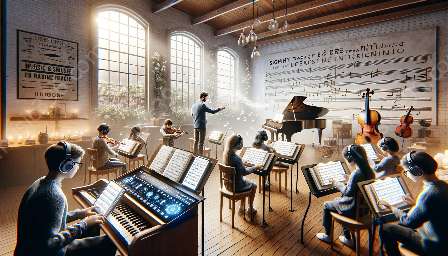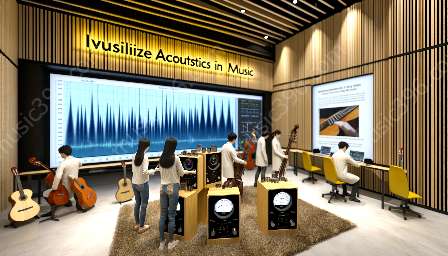Teaching sight reading and ear training to individuals with special needs is an important and rewarding aspect of music education. It involves equipping students with techniques and skills to read and interpret musical notation and develop a keen ear for music. This comprehensive guide explores effective methods and strategies to provide inclusive music instruction to individuals with special needs.
The Importance of Inclusive Music Education
Music education is a valuable tool for individuals with special needs as it promotes cognitive development, social interaction, emotional expression, and overall well-being. Inclusive music education ensures that all individuals, regardless of their abilities, have access to the benefits of music learning. When it comes to teaching sight reading and ear training, it is essential to implement inclusive practices that cater to the specific needs of each student.
Understanding Sight Reading and Ear Training
Sight reading is the ability to read and perform music notation in real time, while ear training involves developing the ability to identify and reproduce musical elements such as pitch, rhythm, and harmony by ear. These skills are fundamental in music education and play a crucial role in a student's overall musical development.
Methods for Teaching Sight Reading to Individuals with Special Needs
Effective methods for teaching sight reading to individuals with special needs involve utilizing multisensory approaches and adaptive techniques. Visual aids, such as color-coded notation and simplified symbols, can help students with visual impairments or cognitive challenges. Providing tactile feedback through touch-sensitive devices or braille notation can also enhance the learning experience.
Adaptive Strategies for Ear Training
When it comes to ear training, adaptive strategies focus on developing auditory discrimination and recognition skills. Utilizing rhythmic and melodic patterns that are easily identifiable can help individuals with special needs internalize musical elements. Additionally, incorporating interactive listening activities and games can foster a deeper understanding of musical structures.
Incorporating Technology
Technology plays a significant role in enhancing the teaching of sight reading and ear training to individuals with special needs. Software and apps designed for adaptive music education can provide personalized learning experiences, interactive exercises, and customizable settings to accommodate diverse learning styles.
Creating Inclusive Learning Environments
Establishing inclusive learning environments involves promoting a culture of respect, understanding, and support for students with special needs. Educators should embrace diverse teaching strategies, encourage peer collaboration, and provide individualized accommodations to ensure that all students can participate and progress in their musical journey.
Collaboration with Specialized Professionals
Collaborating with specialized professionals such as music therapists, special education teachers, and speech-language pathologists can further enrich the music learning experience for individuals with special needs. Their expertise can offer valuable insights and support in tailoring music instruction to address specific needs and challenges.
Empowering Students through Music
Empowering students through music involves celebrating their unique abilities and fostering a sense of achievement and creativity. By acknowledging individual strengths and providing opportunities for self-expression and performance, students with special needs can develop confidence and a deep connection to music.
Measurement of Progress and Achievements
Tracking progress and achievements is essential in evaluating the effectiveness of music instruction for individuals with special needs. Using a combination of formal assessments and informal observations, educators can assess skill development, musical engagement, and overall growth in musical proficiency.
Promoting Inclusion and Accessibility
Promoting inclusion and accessibility in music education requires ongoing advocacy for resources, facilities, and support services that cater to the diverse needs of students with special needs. Creating awareness and fostering a sense of belonging within the broader music community is crucial for ensuring equal opportunities for all individuals.
Conclusion
Teaching sight reading and ear training to individuals with special needs in the context of music education is a multifaceted and enriching endeavor. By embracing inclusive practices, leveraging adaptive techniques, and fostering a supportive learning environment, educators can empower individuals with special needs to explore the transformative power of music and unleash their creative potential.
References:
- David, B. Music Education for Special Needs: The Path to Inclusion. Routledge, 2019.
- Smith, E. Inclusive Music Education: A comprehensive approach. Oxford University Press, 2020.















